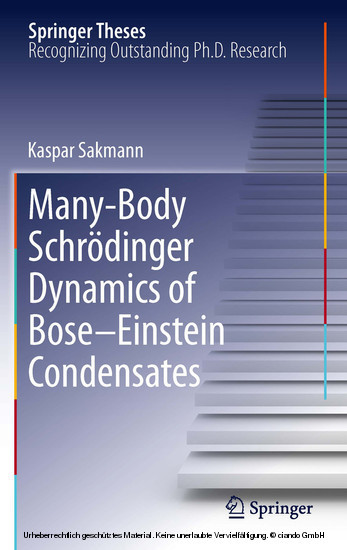Sakmann, Kaspar (Autor)
Many-Body Schrödinger Dynamics of Bose-Einstein Condensates

Beschreibung
At extremely low temperatures clouds of bosonic atoms form what is known as a Bose-Einstein condensate. Recently, it has become clear that many different types of condensates -- so called fragmented condensates -- exist. In order to tell whether fragmentation occurs or not, it is necessary to solve the full many-body Schrödinger equation, a task that remained elusive for experimentally relevant conditions for many years. In this thesis the first numerically exact solutions of the time-dependent many-body Schrödinger equation for a bosonic Josephson junction are provided and compared to the
approximate Gross-Pitaevskii and Bose-Hubbard theories. It is thereby shown that the dynamics of Bose-Einstein condensates is far more intricate than what can be anticipated based on these approximations. A conceptual innovation of this thesis are optimal lattice models. It is shown how all quantum lattice models of condensed matter physics that are based on Wannier
functions, e.g. the Bose/Fermi Hubbard model, can be optimized
variationally. This leads to exciting new physics.
approximate Gross-Pitaevskii and Bose-Hubbard theories. It is thereby shown that the dynamics of Bose-Einstein condensates is far more intricate than what can be anticipated based on these approximations. A conceptual innovation of this thesis are optimal lattice models. It is shown how all quantum lattice models of condensed matter physics that are based on Wannier
functions, e.g. the Bose/Fermi Hubbard model, can be optimized
variationally. This leads to exciting new physics.
Produktdetails
| ISBN/GTIN | 978-3-642-22866-7 |
|---|---|
| Seitenzahl | 132 S. |
| Kopierschutz | mit Wasserzeichen |
| Dateigröße | 3606 Kbytes |

